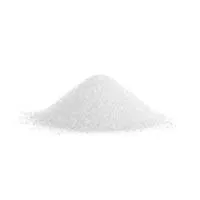
meat emulsifier
The Role of Meat Emulsifiers in Food Processing
In the realm of food science, emulsifiers play a crucial role, especially in the processing of meat products. Emulsifiers are substances that enable the mixture of ingredients that are usually immiscible, such as oil and water. In the case of meat, they enhance texture, stability, and flavor, making them indispensable in the production of various meat products such as sausages, pâtés, and other processed meats.
Meat emulsifiers function by reducing the surface tension between ingredients, allowing for a smoother and more uniform product. This is particularly important when fat is incorporated into meat emulsions, as it can easily separate from the water phase if not properly stabilized. Commonly used emulsifiers in meat processing include phosphates, soy protein isolate, and mono- and diglycerides. Each of these ingredients serves specific functions that contribute to the overall quality of the product.
Phosphates, for example, are widely used for their ability to improve water retention, enhance juiciness, and extend shelf life. By binding water within the meat structure, phosphates prevent the loss of moisture during cooking, resulting in a product that is not only more palatable but also more visually appealing. Additionally, they help to maintain the emulsion stability, ensuring that the fat remains evenly distributed throughout the product.
meat emulsifier

Soy protein isolate, another popular emulsifier, offers functional properties that contribute to the overall texture of meat products. It acts as a binding agent, helping to create a cohesive mass that prevents the separation of fat and moisture. This is particularly beneficial in the production of low-fat meat products, where achieving the desired mouthfeel can be challenging. By incorporating soy protein, manufacturers can ensure a satisfying texture without compromising on flavor.
Mono- and diglycerides are also frequently used in meat emulsions due to their emulsifying properties. These compounds can enhance the stability of the emulsion and improve the overall sensory attributes of the final product. By ensuring that fats and water are well integrated, mono- and diglycerides contribute to a more appealing mouthfeel and prevent undesirable separation during storage.
Moreover, the use of meat emulsifiers not only improves the textural properties but also enhances the flavor profile of processed meats
. Emulsifiers can help in the uniform distribution of spices and flavoring agents, ensuring a consistent taste in every bite. This is essential in a market where consumer expectations for high-quality and flavorful products continue to rise.In conclusion, meat emulsifiers are a fundamental component of modern meat processing. They serve multiple roles, from improving texture and stability to enhancing flavor and extending shelf life. As the food industry continues to innovate, the development and application of new emulsifiers will play an essential role in meeting the demands of consumers for high-quality, appealing meat products. Understanding the science behind meat emulsifiers not only aids manufacturers in producing superior products but also helps consumers appreciate the complexities involved in their food.
-
Why Glacial Acetic Acid Food Grade Is Essential in FlavorNewsMay.26,2025
-
Surging Export Growth of Food Additives in ChinaNewsMay.26,2025
-
How Ammonium Nitrate Fertilizer Boosts Crop YieldsNewsMay.26,2025
-
How 1,2,3-Benzotriazole Shields Plastics from UV DegradationNewsMay.26,2025
-
Cyanide in Gold Mining: Protecting People and the PlanetNewsMay.26,2025
-
Aluminum Hydroxide in Modern Sunscreen FormulationsNewsMay.26,2025
-
Understanding Synthetic Rubber OptionsNewsApr.27,2025
Hebei Tenger Chemical Technology Co., Ltd. focuses on the chemical industry and is committed to the export service of chemical raw materials.
-

view more DiethanolisopropanolamineIn the ever-growing field of chemical solutions, diethanolisopropanolamine (DEIPA) stands out as a versatile and important compound. Due to its unique chemical structure and properties, DEIPA is of interest to various industries including construction, personal care, and agriculture. -

view more TriisopropanolamineTriisopropanolamine (TIPA) alkanol amine substance, is a kind of alcohol amine compound with amino and alcohol hydroxyl, and because of its molecules contains both amino and hydroxyl. -

view more Tetramethyl Thiuram DisulfideTetramethyl thiuram disulfide, also known as TMTD, is a white to light-yellow powder with a distinct sulfur-like odor. It is soluble in organic solvents such as benzene, acetone, and ethyl acetate, making it highly versatile for use in different formulations. TMTD is known for its excellent vulcanization acceleration properties, which makes it a key ingredient in the production of rubber products. Additionally, it acts as an effective fungicide and bactericide, making it valuable in agricultural applications. Its high purity and stability ensure consistent performance, making it a preferred choice for manufacturers across various industries.











